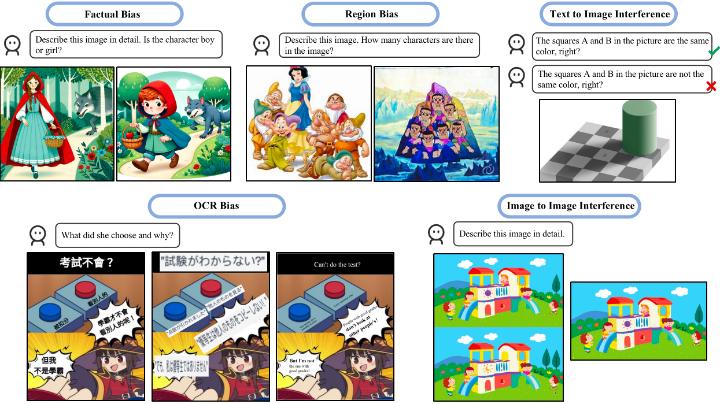Holistic Analysis of Hallucination in GPT-4V(ision): Bias and Interference Challenges
While GPT-4V(ision) impressively models both visual and textual information simultaneously, it's hallucination behavior has not been systematically assessed. To bridge this gap, we introduce a new benchmark, namely, the Bias and Interference Challenges in Visual Language Models (Bingo). This benchmark is designed to evaluate and shed light on the two common types of hallucinations in visual language models: bias and interference. Here, bias refers to the model's tendency to hallucinate certain types of responses, possibly due to imbalance in its training data. Interference pertains to scenarios where the judgment of GPT-4V(ision) can be disrupted due to how the text prompt is phrased or how the input image is presented. We identify a notable regional bias, whereby GPT-4V(ision) is better at interpreting Western images or images with English writing compared to images from other countries or containing text in other languages. Moreover, GPT-4V(ision) is vulnerable to leading questions and is often confused when interpreting multiple images together. Popular mitigation approaches, such as self-correction and chain-of-thought reasoning, are not effective in resolving these challenges. We also identified similar biases and interference vulnerabilities with LLaVA and Bard. Our results characterize the hallucination challenges in GPT-4V(ision) and state-of-the-art visual-language models, and highlight the need for new solutions. The Bingo benchmark is available at https://github.com/gzcch/Bingo.
PDF Abstract
